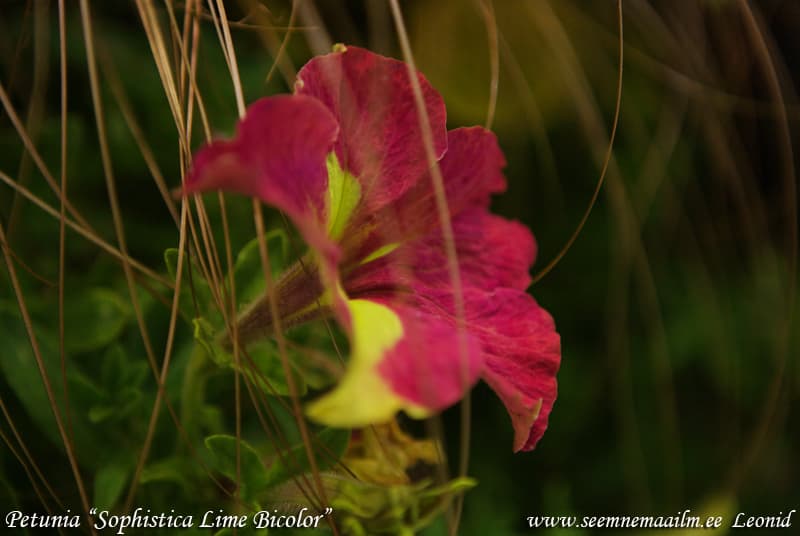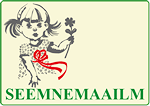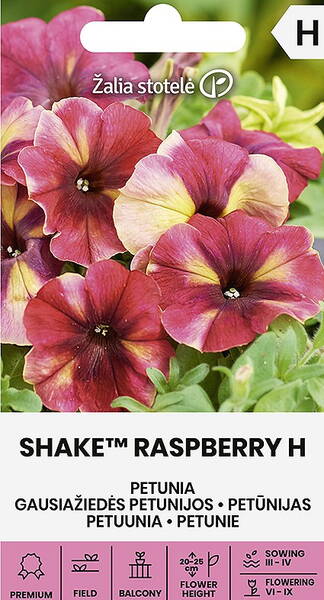A powerful, densely branched bush 20-25 cm high. Flowers with a spectacular raspberry color interspersed with lemon stripes and spots.
Blooms profusely from June to October.
Succeeds perfectly both in the ground and in container decoration. Excellent tolerance to transplanting while in bloom.
Used in flower beds, in borders to create bright groups, and in hanging baskets/planters.
Agrotechnics.
Sowing: February-April for seedlings. Pelleted seeds!
To facilitate the sowing and cultivation of small-seeded crops, a system has been developed to coat each seed with a special composition.
When moisture hits the pellet, the shell crumbles. Granules are placed on the surface of slightly compacted and moistened soil without covering them, moistened from a spray bottle, covered with glass, and kept at a temperature of +20+24°C, preventing the pellet shell and compost from drying out until the seedlings germinate and periodically removing condensation drops from the glass surface.
Shoots appear only in the light (excluding direct sunlight) on days 10-15.
After the appearance of the first true leaf, the crops are ventilated and later the glass is removed, gradually lowering the temperature to +14+16°C. Petunia seedlings do not tolerate waterlogging well.
Hardened seedlings are planted in the ground after spring frosts have ended at a distance of 15-20 cm.
Care: Petunia grows better in well-lit places with light, fertile soil. Responds gratefully to watering and regular feeding.
Flowering: from June until frost.

Petunia Life Cycle: a perennial herbaceous plant used in culture as an annual. Seeds are very small.
Sowing: under Estonian conditions, petunia is sown in the second half of March (for earlier flowering - in late January-February).
The soil mixture should consist of humus, sod or leafy earth, peat, and sand (2:2:2:1). After mixing and sifting, the boxes are filled with the mixture, watered with a fungicide solution, and sown a day later. Pellets are simply spread over the surface, then sprayed from a spray bottle, covered with glass, and kept at a temperature of +20+23°C.
Seedling cultivation: after germination, seedlings are sprayed with water 1-2 times a day, foliar feeding with complex fertilizers is carried out, and supplementary lighting is provided if there is a lack of light. When 1-2 true leaves appear, prick out into peat pots or cassettes filled with the same soil mixture as for sowing.
Seedling care requires special attention: watering, loosening the soil, weekly feeding. If seedlings develop poorly, they are sprayed with growth stimulants.
Soil: outdoors, petunia is grown on loose, nutritious soils with a neutral reaction.
Planting: in a flower bed, the distance between plants should be 15-30 cm, when grown on a balcony - 1.5 times closer. After planting, the soil is mulched with peat or humus and watered.
Care: feeding begins a week after planting. Until the end of flowering, petunia needs to be fed every 10-15 days. Flowering petunias are watered carefully, at the root. Faded flowers are removed so as not to disturb the decorativeness of the plants.
Usage: in flower beds, borders, on balconies.












